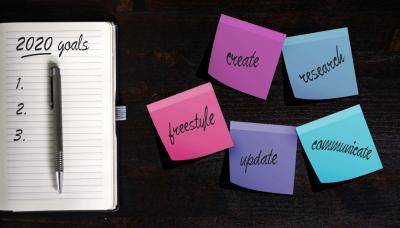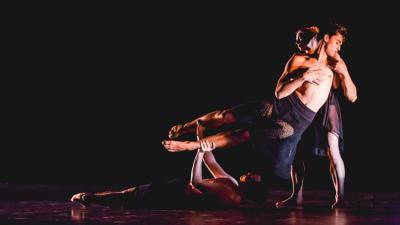We’ve all been there: training tirelessly in class and working hard at auditions in hopes of getting that one “yes” for a job or opening a door to that huge dream opportunity. The professional dance industry can be cutthroat and, naturally, many dancers feel like they need to jump on any opportunity that presents itself. However, what we sometimes lose sight of is the fact that an audition is a two-way street – you’re auditioning for the casting director/choreographer, but they’re also auditioning for you! With that, something to always remember is to make sure your core values align with the project you’ll be working on; or in the case that there is a value conflict, it’s important to know how to professionally navigate the situation.
Every time we produce or consume art, we need to critically think about how it will add value to others.
Let me put this into context through one of my personal experiences. Recently, I had the incredible opportunity to perform in a book musical production. Rehearsals were going smoothly until we reached a certain part of the show where I was meant to participate in what I perceived as a racist scene. Being that this was a period-based show, the script could not be altered unless we went through the estate, so I kindly asked to be removed from the section. Although my gut told me this scene was inappropriate, I was questioned and informed that it was my job as an actor to commit to my entire show track. As a result, I found myself in an interesting dancer’s conundrum: although as a performer, I want to maintain a strong relationship with who I work with and fully deliver on my job, my gut reaction about this particular scene couldn’t be stronger. Was it ok to partake in an offensive scene if I was merely acting? Was I being unprofessional for standing up for my personal beliefs? At what point is it necessary to draw the line as an artist when you encounter a value conflict? After reflecting upon the situation, I found myself going back to three key factors that helped me come to my final decision on the matter. Through learning from my own personal experience, I hope the following considerations will offer you some insight and guidance as well.
1. Clarify the intention of the scene or role
In my case, there seemed to be a bit of confusion around the intention and function of the controversial scene. For some, it was meant to be comedic and, consequently, made it feel highly offensive. For others, they thought it was meant to be respectful. Because the intention was never solidified by the choreographer or director, the execution of the scene felt unclear with tons of room for misinterpretation. Not to mention, the scene did not add significant value to the overall story arch of the show. Therefore, what I learned from this was the following: if your given role or dance track is controversial to you, go back to why it’s in the show in the first place. You can always do your own research into the writer and the show’s previous iterations to discover why the element may or may not be essential to the show’s storyline or overall message. What is the purpose of the scene: to insult others, or to shed light on an important issue? If the scene is meant to shed light on a certain topic, then the next element to look at is how it’s being executed – from a choreographic and performance standpoint. Will the audience perceive it correctly or can execution be clarified to match the intention more? On the other hand, if the role is merely there to insult or offend, then that’s most likely an indication that a discussion with your dance captain or directly with your choreographer/director is necessary.
2. Consider your core values
Core values range from person to person and can be based on a myriad of factors including your spiritual beliefs, upbringing and cultural background, influence from your social circles, etc. For example, if you strongly believe in a certain religion and were asked to portray a character or role that goes against your spirituality, would you do it? On a separate note, would you feel comfortable doing Burlesque gigs if you were raised in a more conservative household? Neither of these questions have universally correct answers. They are both merely questions to ask yourself so you can start critically thinking about what dance jobs you would be open to and what jobs are a hard pass. In my case, I felt strongly about this scene especially due to my attachment to my own culture. I knew that if the tables were turned and my culture was the butt of a joke, I would be highly offended as an audience member. I also put myself in my friends’ and family’s shoes and knew that they wouldn’t have appreciated the scene either. To put it simply, as long as you stay true to your core values and personal beliefs, you can trust that you’re making the right choice.
3. Listen to your gut instinct
The most important thing I learned through my experience was that if there’s ever a moment on a job where you feel uncomfortable or an immediate red flag pops up, listen to that internal voice and start standing up for your beliefs. In the end, I realized my gut reaction was too strong to ignore, so I did the scary thing and spoke to the show’s higher ups. Despite the initial backlash I felt, our team ended up contacting the book show’s estate and received a revised scene for that portion of the show. The experience taught me a lot about the importance of valuing my own morals and just how strong a single voice can be.
If your given role or dance track is controversial to you, go back to why it’s in the show in the first place.
The main lesson I learned was that everyone has her/his own limits, but it’s crucial to ask the difficult questions before saying yes to what could be a controversial role or job. This is especially relevant when it comes to revisiting classic musicals and classic ballets, such as the currently controversial Nutcracker, that were created in a different time period and sociocultural environment. As we explore how to continue maintaining the integrity of a “timeless” piece of art, while also keeping up with our ever-evolving world, we can work together as artists to grow in a positive direction. Personally, I believe that dance has the power to enrich our culture and society as a whole. Therefore, every time we produce or consume art, we need to critically think about how it will add value to others and whether or not a tiny script revamp is due. I’ll finally step off my soap box after leaving you with one last piece of advice: most importantly, take the time to get well acquainted with your core values and morals so you can confidently know where you would draw the line as an artist.




